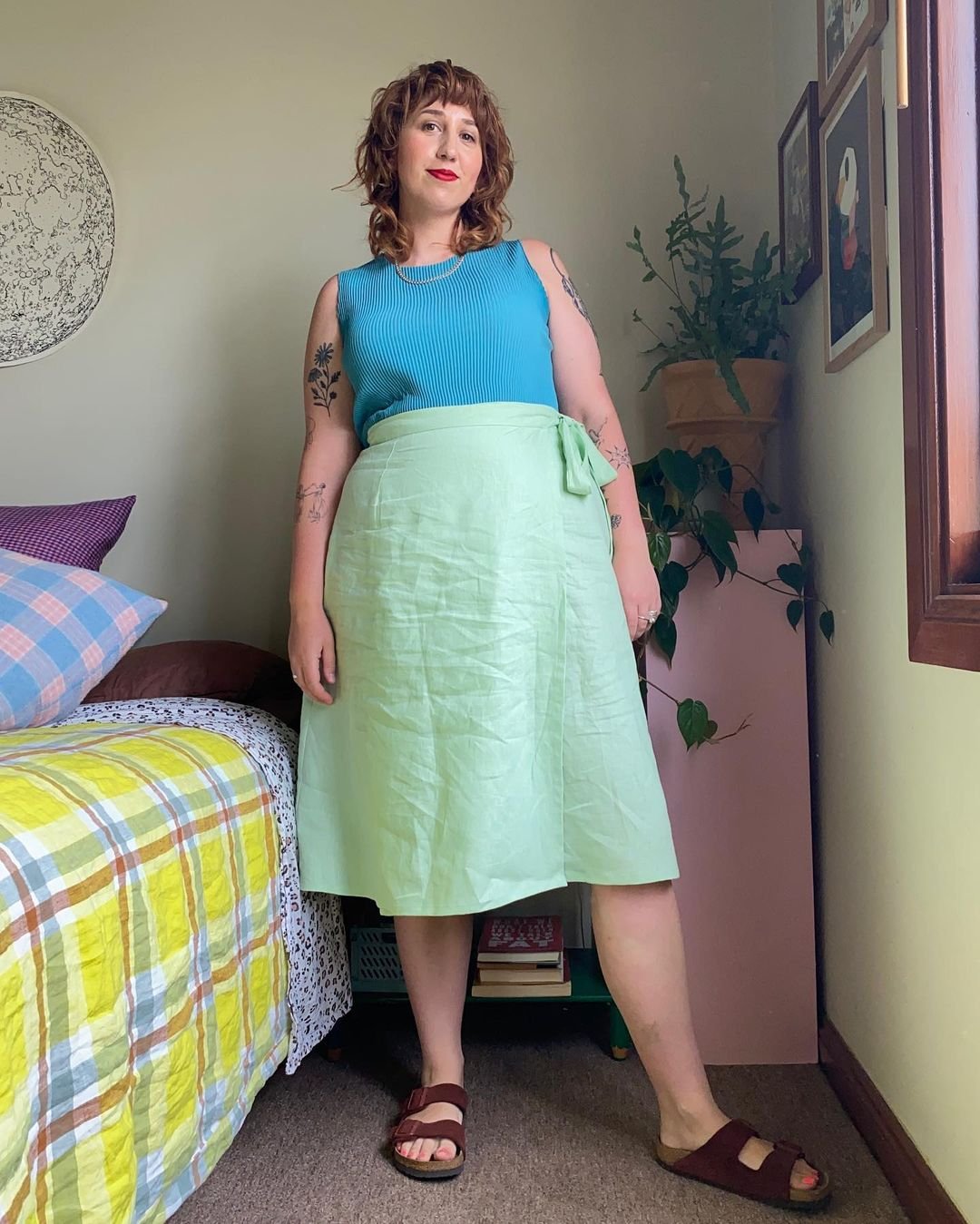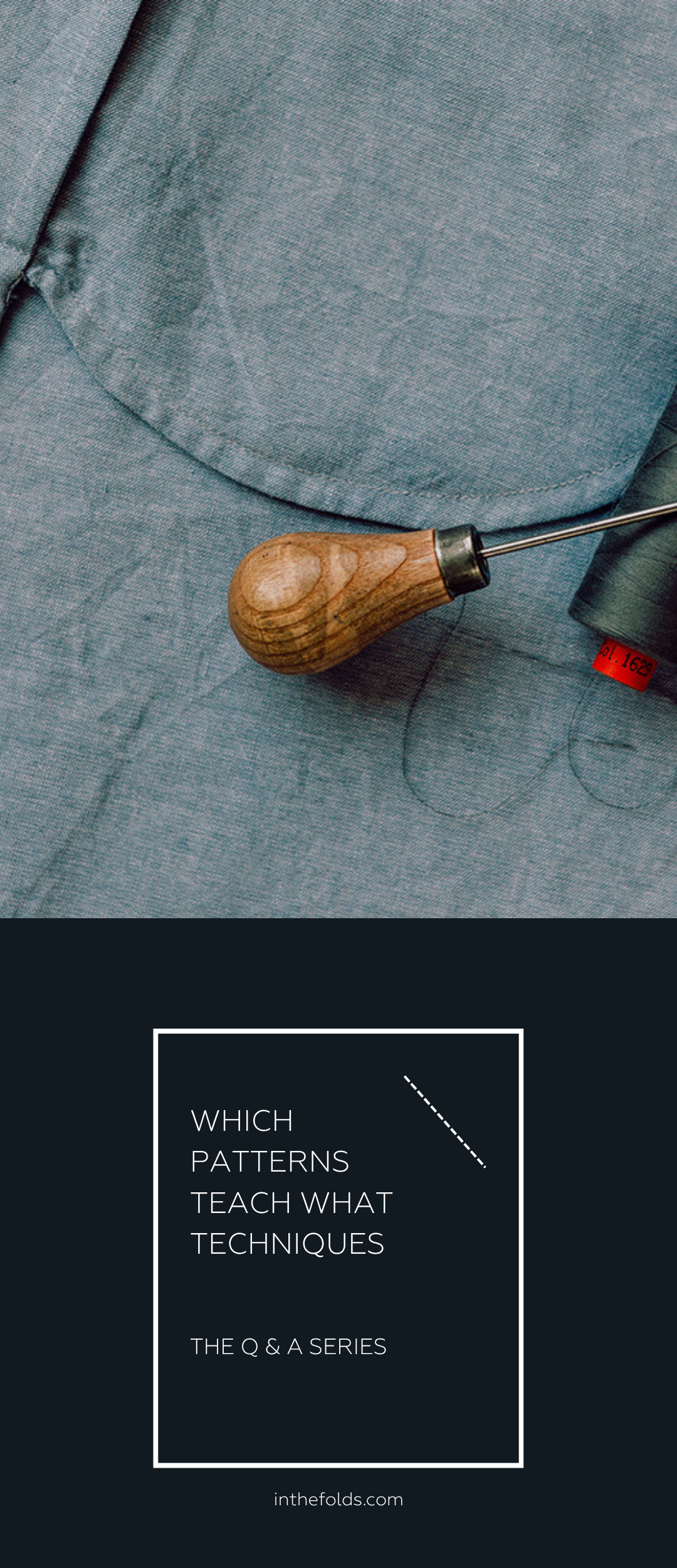THE Q & A SERIES
TIPS FOR CUTTING KNIT FABRIC
Hi Emily,
I’m struggling to cut knit fabrics. Whenever I cut them out and unpin the pattern pieces, they appear smaller than the pattern! Do you have any tips to help me cut more accurately?
Thanks,
Mel
Hi Mel,
This is actually a really common problem, so I’m glad you asked the question!
This month in our Curated by ITF sewing subscription we’re learning all about how to sew with stretch fabric with our Sewing Knits Skills Kit.
It can be really tricky to cut knit fabric because it often stretches as you pin and cut, meaning the pieces become the wrong size. Just another reason people find sewing with knits a bit frustrating!
I’ve got a few simple tips that will help ease the process and allow you to cut your stretch fabric accurately.
Before you start
Prewash your fabric
When making garments you should always wash and dry your fabric before starting. This is no different for stretch fabric.
I recommend that you use the same method you intend to use when washing your garment after wearing so it doesn’t shrink after the first wash. If you wash in cold water only, then prewash in cold water. If you wash in warm water, then prewash in warm water.
Press your fabric
After you’ve washed and dried your fabric, give it a good press. Take care not to overstretch the fabric while doing this.
If you find that the edges of the fabric are rolling, now is a great time to use some starch spray. This helps to stabilise the fabric and washes out after sewing. And you’ll actually find this helps while sewing the pieces together, as well as when cutting.
Use the right tools
Pinning and cutting with scissors is often what makes the pieces smaller or misshapen.
Instead, use a rotary cutter, weights and a cutting mat. These tools help with accuracy because they stop the fabric from pulling as you cut, which happens as you pin and cut with scissors.
This is a great chance to make the pattern weights from Issue 17 of Curated by ITF!
Cutting technique
Check the grainline
Ensuring your pattern piece is on grain will also help with cutting your knit fabrics accurately.
To do this, take your pattern pieces and lay them on your fabric with the grainline of each pattern piece running exactly parallel to the selvedge.
Use a tape measure to measure from each end of the grainline mark on your pattern piece to the selvedge. Adjust the pattern piece until the measurement is the same from both ends of the grainline mark.
Use the pattern’s cutting plan as a guide to lay out your pieces.
Cut the fabric flat
If a pattern piece says ‘CUT 1 ON FOLD,’ it means to align the pattern piece's fold line with the fabric's fold so that you will be left with a full pattern piece once cut. However, we recommend cutting knit pieces flat rather than on the fold.
To do this, trace both sides of the pattern so that you have a full pattern piece, and then use this to cut your knit fabric.
If you want to cut the pieces on the fold, take particular care not to stretch the fabric. It may help to cut the fabric into smaller pieces to stop this from happening.
Take care when cutting notches
Instead of using scissors or a rotary cutter to cut notches, cut them with snips. Take care not to cut too deep, as the seam allowance on stretch patterns is often smaller than on wovens.
Alternatively, mark notches with chalk to avoid the possibility of creating a run in the knit fabric.
Learn more knit skills with us!
Knit fabric has become such a large part of our everyday life, and yet it’s a textile that many sewists find a bit overwhelming. That’s why we created the Sewing Knits Skills Kit. The first in a two-part knit fabric series, we’re using samplers to learn everything we need to know to sew stretch patterns on a regular sewing machine so we can put our new skills into practice with part two in the series, our T-shirt pattern.
There’s so much to learn that will make it much easier to sew with this tricky (but oh so comfy!) fabric. I hope you can join us!
Happy sewing,
Emily
RESOURCES MENTIONED IN THIS ISSUE
For more issues of the Q & A series, you can check out the archive here.
WHAT YOU’VE BEEN MAKING
Peppermint Wrap skirt made by @liv_sews
Pattern weights made by @jimpaxmax









